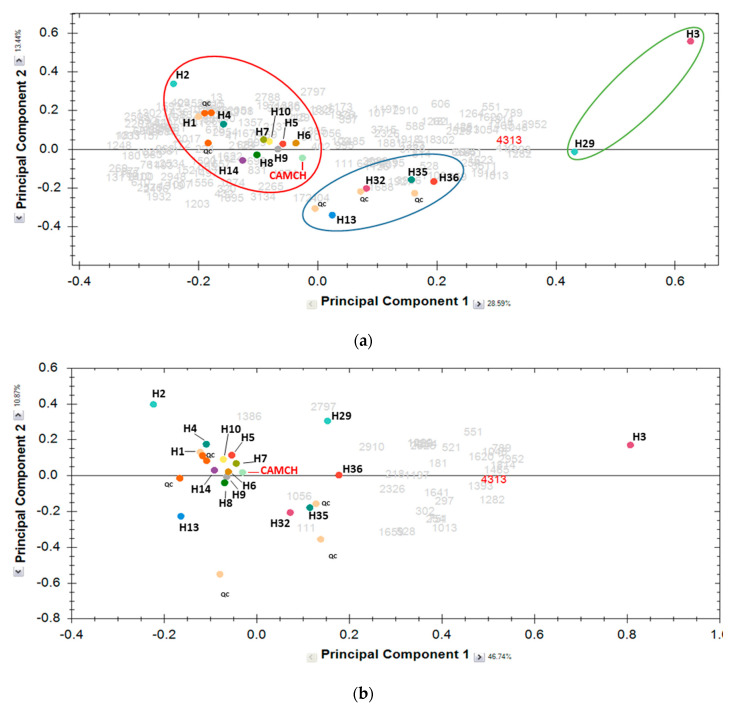Figure 3.
Principal component analysis of the most abundant identified peptides corresponding to the commercially available, unknown milk casein hydrolysate (CAMCH) and the 16 hydrolysates of (a) milk protein liquid fraction enriched in micellar caseins (ratio micellar caseins/whey proteins (92:8)) and (b) the 32 peptides (depicted in grey numbers) most abundant in H3 than in other hydrolysates (H13, H2, H14, H5, H1, H32, H4, H29, H36, and CAMCH). Principal components #1 and #2 of A explain 28.92% and 13.56% of variance, while principal components #1 and #2 of B explain 47.12% and 10.98% of variance, respectively. Grey numbers correspond to identified peptides displaying a mass signal intensity > to 1e4, while red number corresponds to one peptide of the H3 hydrolysate displaying the greatest fold change (infinity). Color circles are hand-marked to facilitate understanding and have no statistical significance.

